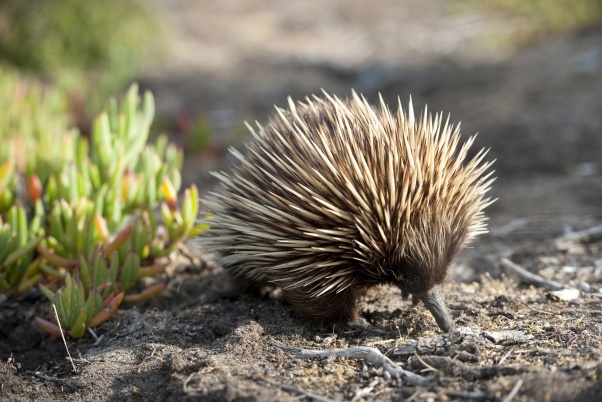Four Seasons of Wildlife on Kangaroo Island

Kangaroo Island’s renowned wildlife experience is a rewarding treat for everyone – it might just take a little patience, planning and some local knowledge.
Animals can be found all year round but most come out to feed and play at night. All native animals are genuinely wild, and protected. Please keep your distance and use binoculars or a telephoto lens to view them; and park in safe areas, well off the road.
The Kangaroo Island Kangaroo is the largest and most visible of the 18 species of native land mammals on the island – males can be 2 metres tall. The smallest is the Little Pygmy Possum at 10 grams. Koalas live in trees along river systems. They are active mostly at night but the sharp-eyed can spot them sleeping during the day. Some good viewing spots are near the Flinders Chase National Park Visitor Centre and at Duck Lagoon on Cygnet River.
Australian Sea Lions’ 18-month breeding cycle means small pups may be present at different times each year but females suckle young for 16 months, until just before the next pup is born, basking on sand between fishing trips to the continental shelf. Two species of fur seal are also common around the island.Out in the water, bottle-nosed dolphins are common all year. A pod cruises back and forth around Penneshaw and others patrol waters around the island. Pelicans glide into the Bay of Shoals or American River and have their feed on tap at 5pm each evening at Kingscote jetty.And in the air, Wedge-tailed Eagles are a common sight across the island scanning the ground for a feed. Not nearly so often – but you can be lucky – a White-Bellied Sea-Eagle glides past near the coast.
Autumn
Autumn invites nature lovers to Kangaroo Island and asks them to explore. The wind is low, the days are bright and clear, and winter rain has not yet kicked in.Kangaroos and Tammar Wallabies have young in the pouch but they’re seen only as a bulge on their mother’s tummy.The animals out in the sun are the reptiles and the most spectacular is the Heath (or Rosenberg’s) Goanna which can grow to 1.5 metres long. There are also 15 small lizards. Keepan eye out for Tiger Snakes and, more rarely, Pygmy Copperheads on sunny days; both are venomous.Cape Barren Geese prepare to nest in Native Iris tussocks or build a stick saucer nest on the ground in open areas at Flinders Chase and nearby.
Winter
Nature may be ‘acting out’ but for those with even the tiniest sense of adventure, winter is when Kangaroo Island comes into its own as a force-of-nature destination.
Kangaroo joeys are emerging from their mothers’ pouches and starting to explore. Tammar wallabies, with joeys peeping out from pouches, move to the edge of scrub around dusk to feed in open areas. Koala young are perched on their mother’s back as she feeds in Eucalyptus trees.Winter is Echidna mating season, with animals more active during the day. Echidna trains can form with one female followed by up to 10 males. When it’s cold and wet they can hunker down and hide away. Adult Rosenberg’s Goannas may bask near burrows on warm winter days but Pygmy Possums, like the snakes and lizards, become torpid at low temperatures.
Winter is whale time, particularly Southern Right Whales which visit each year. Look for them close inshore along the north and south coasts. Mothers may rest with young in more sheltered bays. And other whale species, such as Humpbacks, can cruise by. Orcas, or Killer Whales, are occasionally looking for a seal meal. Young Glossy Black-cockatoos perch at the entrance to their nest hollow for some days before taking their first and final flight from the nest.
Spring
In spring Kangaroo and Tammar Wallaby joeys are exploring and returning to mother’s pouch. Echidnas have young too and Pygmy Possums are coming out of winter torpor.In September, hatchlings of Rosenberg’s Goanna begin to excavate their escape tunnel from termite mounds where the eggs were laid. In October and November, the orange and grey hatchlings emerge in warm sunny weather to bask and forage but return to the nest at night.The 2cm long, bright Green Carpenter Bees are storing pollen and nectar in brood cells to feed their young. If you do see this rare bee, more likely out west, please let the people at Natural Resources Kangaroo Island know at kinrc@sa.gov.au or 8553 4444.Flocks of non-breeding Glossy Black-cockatoos are feeding in the she-oaks from Penneshaw to Stokes Bay.
Summer
During the island’s warmest months, nature is an agreeable companion to a relaxing Kangaroo Island holiday. Summer is Koala mating time and the young is born five weeks later but it’s not for another seven months that it is safely perched on its mother’s back, with full fur. Look for young Koalas striking out for independence.Echidna young are being weaned at seven months when they are already covered in spines and half-size miniatures of their mother.You’ll have more chance of seeing Platypus now when water levels are low and they are confined to the pools on the Platypus Walk in Flinders Chase National Park.
The hatchlings of Rosenberg’s Goanna are venturing forth and leaving the nest. By February, adults are courting and egg-laying in termite mounds. Summer is breeding time for both Australian and Long-Nosed fur seals. At the season peak in January fierce territorial battles are common – don’t venture from the boardwalk at Admiral’s Arch!
Discover more... Take a wildlife tour with experts who know where and when to find wildlife.
